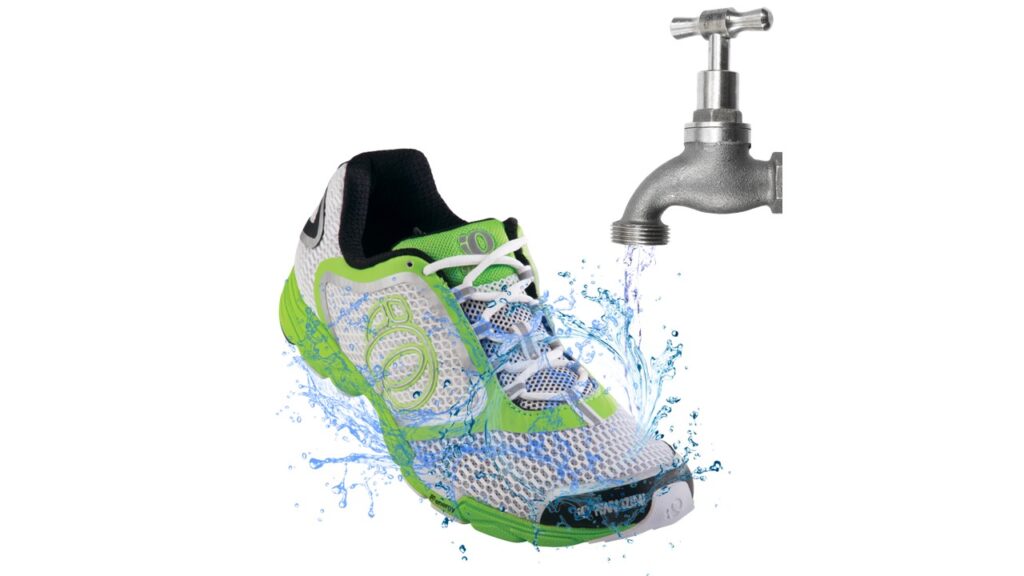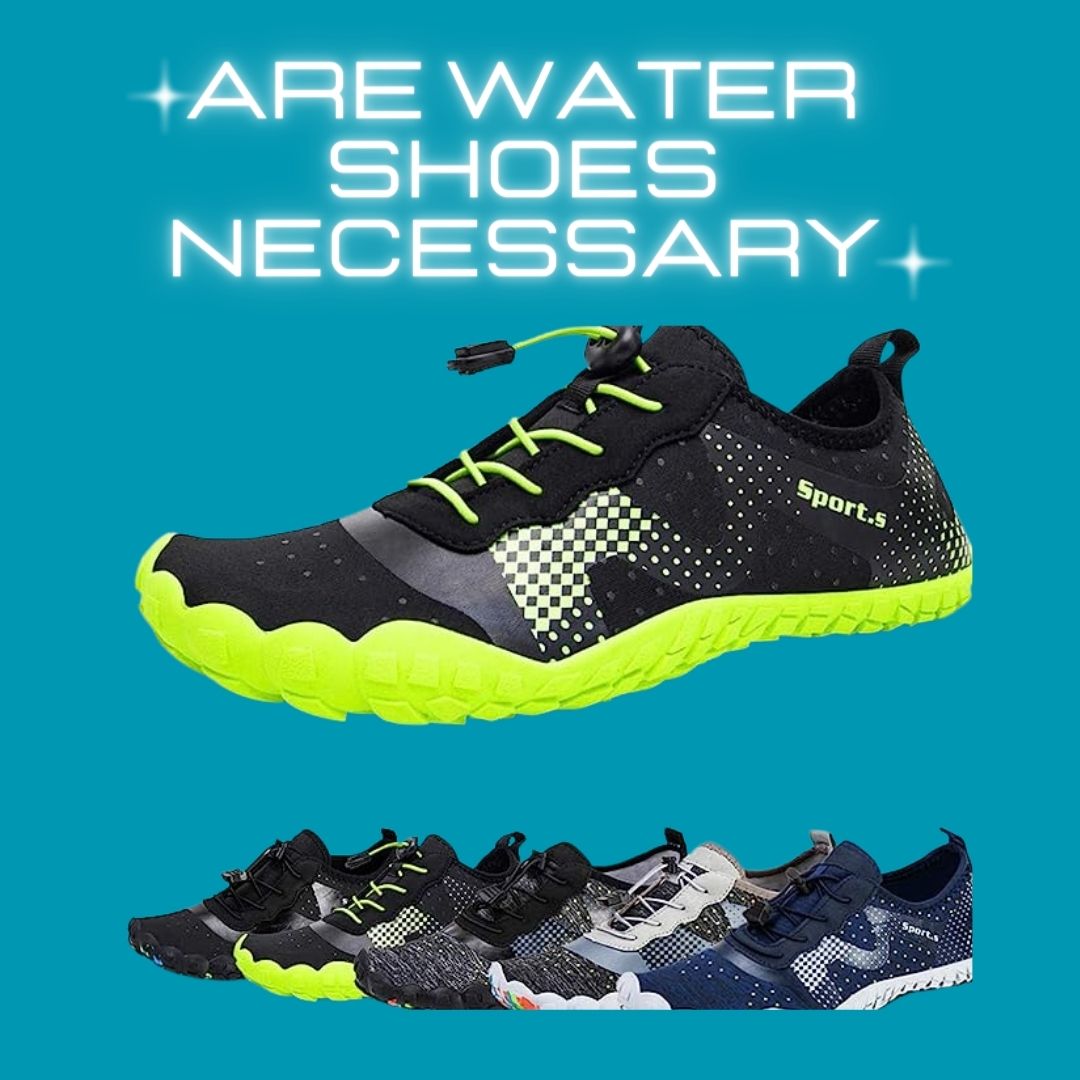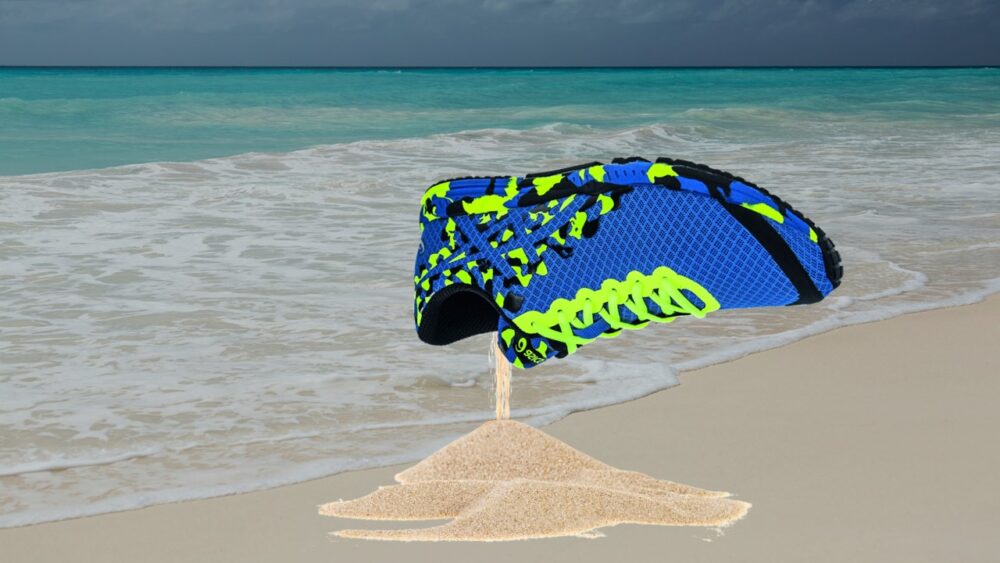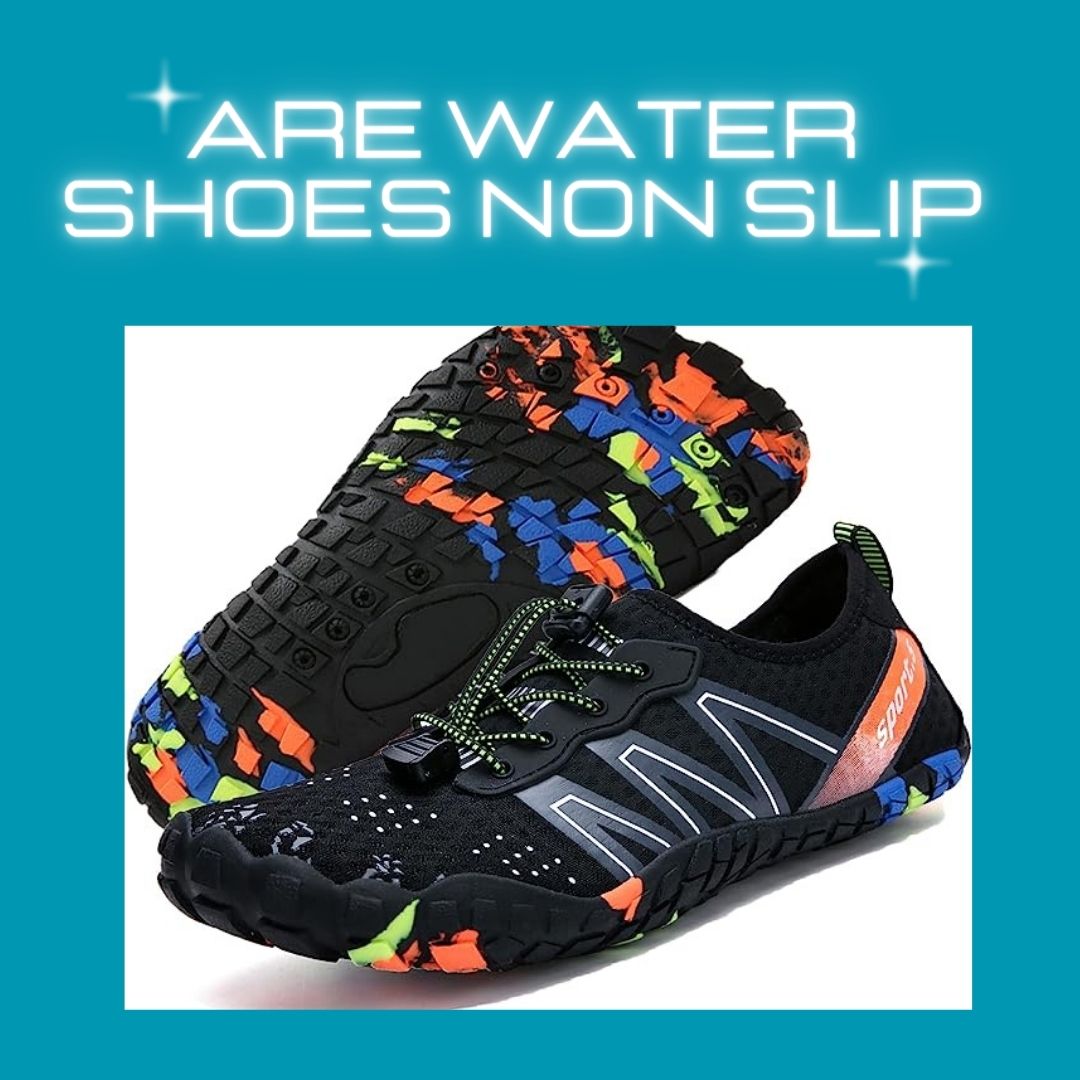How To Store Water Shoes – Unlock The Secrets Of Expertly Preserving Your Water Shoes
Looking for a definitive answer to the question “How to store water shoes?” Water shoes are essential companions for any aquatic adventure, whether you’re exploring rocky shorelines, swimming in pools, or kayaking down rivers. However, proper storage is crucial to ensure their durability and longevity.
Water shoes are invaluable companions for your aquatic adventures, but improper storage can lead to premature wear and discomfort.
In this article, we’ll present a detailed step-by-step approach to storing water shoes. We’ll address common concerns, recommend materials and tools, and even provide additional tips and tricks to maintain these crucial pieces of footwear. Let’s get to this ASAP!
How To Store Water Shoes
Proper storage of water shoes is essential to maintain their quality and functionality. Here are some of the best storage options, along with important considerations:
1. Hanging Them
Hanging your water shoes is a great storage option for several reasons. You can use a hook, hanger, or a dedicated drying rack to hang them upside down. This method allows for efficient air circulation and gravity to remove any remaining moisture. Here’s how to do it:
- Choose a location with good airflow but away from direct sunlight and extreme heat sources.
- Use a hanger or a dedicated drying rack to hang your water shoes upside down.
- Ensure the shoes are not crammed too closely together to allow proper ventilation.
2. Using a Shoe Organizer
A shoe organizer is another excellent storage option for water shoes. Here’s how to use one effectively:
- Place your water shoes in a shoe organizer with individual compartments or pockets.
- Ensure the shoe organizer is placed in a well-ventilated area.
- Keep the organizer away from direct sunlight and extreme heat sources.
3. Placing Them in a Well-Ventilated Area
If you prefer not to hang your water shoes or use a shoe organizer, simply placing them in a well-ventilated area can be an effective storage solution. Here are some tips:
- Find a location with good airflow, such as a closet with slatted doors or shelves.
- Ensure the area is clean and dry.
- Avoid placing the shoes directly on the ground or on materials that can trap moisture.
Advanced Storage Tips
1. Use Silica Gel Packets: For extra moisture control, place silica gel packets inside the shoes or storage container. These packets absorb moisture, preventing mold and mildew growth.
2. Separate Shoes: Store each pair of water shoes separately to prevent them from rubbing against each other and causing damage.
3. Regular Inspection: Check your water shoes regularly for signs of wear and tear. Repair any loose stitching or holes promptly to extend their lifespan.
Key Considerations On How To Store Water Shoes
1. Avoid Direct Sunlight
Direct sunlight can cause materials like neoprene to deteriorate and lose their elasticity. Prolonged exposure to UV rays can also fade colors and weaken adhesives. Therefore, always keep your water shoes away from direct sunlight.
2. Extreme Heat
High temperatures, such as those found near radiators or inside hot cars, can deform the materials of your water shoes. Avoid storing them in areas with extreme heat to maintain their shape and integrity.
3. Damp Conditions
Moisture can lead to mold and unpleasant odors. Make sure your storage area is dry and well-ventilated to prevent these issues. Using moisture-absorbing products like silica gel packets can be helpful in areas with high humidity.
RELATED: How Much Do Water Shoes Weigh – Discover The Perfect Weight For Your Water Adventures

The Best Storage Equipment For Water Shoes (How To Store Water Shoes)
Your water shoes are the unsung heroes of your aquatic adventures, so why not treat them to the best storage equipment available? Whether you’re an avid beachcomber, a kayaker, or simply love a dip in the pool, proper storage is the key to keeping your trusty water shoes in top form.
We’ve scoured the options to bring you the best storage solutions that will not only protect your footwear but also save you money and maintain the quality of your favorite aquatic companions. Here are the best solutions to store your water shoes correctly:
Product Image | Product Name | Key Features | Rating | Price |
CIMLORD 9-Tier Foldable Shoe Rack Organizer for Closet 18-36Pairs Plastic Shoe Rack Shelf |
| |||
| ||||
| ||||
| ||||
| ||||
| ||||
| ||||
| ||||
| ||||
|
The Importance Of Proper Water Shoe Storage And The Benefits (How To Store Water Shoes)
Proper water shoe storage is not just about tidiness; it plays a crucial role in preserving the quality of your aquatic footwear and offers several important benefits. Here’s why it’s essential:
1. Extended Lifespan
Well-stored water shoes can last significantly longer. Storing them correctly helps prevent damage and deterioration of materials, ensuring that they remain in usable condition for an extended period. This means you won’t have to replace them as often, saving you money in the long run.
2. Comfort and Performance
Storing your water shoes properly maintains their comfort and functionality. When water shoes are allowed to dry thoroughly and are stored in a way that preserves their shape, you’ll experience the same level of comfort and support with each wear.
There’s nothing worse than putting on water shoes only to find them misshapen or uncomfortable due to improper storage.
3. Hygiene
Proper storage also contributes to the hygiene of your water shoes. Thorough cleaning and adequate drying prevent the growth of mold and the development of unpleasant odors. Storing them in a well-ventilated area ensures that they remain fresh and odor-free.
4. Readiness for Adventure
When your water shoes are stored correctly, they are always ready for your next water-based adventure. You won’t need to spend time cleaning and deodorizing them before use, ensuring that you can dive right into your activities without any hassle.
In essence, proper water shoe storage is an investment in both the longevity of your footwear and the quality of your experiences.
5. Cost Savings
Proper storage can significantly extend the lifespan of your water shoes. As a result, you won’t need to replace them as frequently, saving you money in the long run. Water shoes can be an investment, and taking care of them can provide an excellent return on that investment.
6. Preserved Quality
When you store your water shoes correctly, they maintain their quality and functionality. They remain comfortable, supportive, and ready for action. This means you can enjoy the same level of comfort and protection during each water-based adventure.
7. Protection from Sun Damage
Keeping your water shoes away from direct sunlight and extreme heat sources helps protect them from UV damage and material deterioration. This preservation of color and material integrity ensures they remain not only functional but also aesthetically pleasing.
8. Prevention of Deformation
Storing your water shoes with care, using options like shoe trees or hanging them properly, can prevent creases and deformities in the shoes. This ensures they maintain their shape and form, contributing to their longevity and comfort.
9. Sustainability
Properly maintaining your water shoes and extending their life reduces the environmental impact of producing and disposing of footwear. By practicing good storage habits, you contribute to a more sustainable lifestyle.

How To Clean The Shoes Thoroughly Before Storing (How To Store Water Shoes)
Cleaning your water shoes thoroughly before storing is essential to remove sand, dirt, or debris that can accumulate during your water-based activities. Here’s a step-by-step guide on how to clean your water shoes effectively:
Materials Needed
- Water
- Mild detergent (optional)
- Soft-bristle brush or toothbrush
- Towel
- Running water source (sink, hose, or clean river/pond)
Step 1: Immediate Action (if possible)
If you have access to a water source immediately after using your water shoes, take the following actions:
- Rinse: Rinse your water shoes in clean, fresh water. If you’ve been in saltwater, it’s especially important to remove any salt residue.
- Shake Out Excess: While rinsing, shake your shoes to remove any loose sand or debris.
Step 2: Prepare a Cleaning Area
If you don’t have access to running water immediately, find a suitable area to clean your shoes. It could be a sink, a hose, or a clean river/pond, depending on your location.
Step 3: Remove Insoles and Laces (if applicable)
If your water shoes have removable insoles and laces, take them out. This allows you to clean all parts of the shoes thoroughly.
Step 4: Soak (optional)
For stubborn stains or dirt, you can soak your water shoes in a basin or sink with a mixture of water and mild detergent. Let them soak for a few minutes to loosen the dirt.
Step 5: Scrub Gently
Using a soft-bristle brush or an old toothbrush, gently scrub the exterior and interior of your water shoes. Pay extra attention to the areas where dirt and debris are likely to accumulate, such as the soles, crevices, and seams. Be gentle to avoid damaging the shoe materials.
Step 6: Rinse Thoroughly
Rinse the shoes under running water to remove any soap or detergent residue. If you soaked them in Step 4, make sure to rinse until the water runs clear.
Step 7: Dry Properly
After cleaning, shake the water shoes to remove excess water and pat them with a clean, dry towel to speed up the drying process. It’s important to let them air dry completely to prevent mold growth. Avoid using heat sources like hairdryers or direct sunlight, as they can damage the materials.
Step 8: Reassemble
Once your water shoes are completely dry, reinsert the insoles and laces if you removed them.

The Importance Of Allowing Water Shoes To Dry Completely Before Storing Them (How To Store Water Shoes)
Allowing water shoes to dry completely before storing them is crucial for maintaining their quality and preventing issues like mold and odors. Here’s why it’s important and some tips to ensure they are fully dry:
Importance of Allowing Water Shoes to Dry Completely
1. Mold Prevention: Damp or moist conditions inside your water shoes provide an ideal environment for mold and mildew to grow. Mold not only damages the shoes but can also lead to health concerns. Allowing your water shoes to dry completely helps prevent mold growth.
2. Odor Control: Moisture trapped in your shoes can lead to unpleasant odors. Proper drying ensures that your water shoes remain fresh and odor-free, making them more comfortable to wear.
3. Material Integrity: Water shoes are often made from materials like neoprene, mesh, and rubber, which can deteriorate if not adequately dried. Allowing them to dry completely helps preserve the integrity of these materials, ensuring your shoes last longer.
Tips to Ensure Water Shoes are Fully Dry
1. Remove Insoles and Laces: If your water shoes have removable insoles and laces, take them out after use. This allows air to circulate more effectively within the shoes, speeding up the drying process.
2. Shake Out Excess Water: After use, shake your water shoes to remove any excess water or debris. This step is particularly important if you’ve been in muddy or sandy conditions.
3. Pat Dry with a Towel: Gently pat the exterior of your water shoes with a clean, dry towel. This helps absorb remaining moisture and speeds up the drying process.
4. Air Dry in a Well-Ventilated Area: Place your water shoes in a well-ventilated area at room temperature. Avoid direct sunlight and high heat sources, as they can damage the materials. Hanging them upside down or using a shoe rack can facilitate proper air circulation.
5. Use Shoe Trees: If you have them, shoe trees can help maintain the shape of your water shoes while they dry. Shoe trees are especially useful for preventing creases and deformities in the shoes.
6. Alternate Shoes: If you use water shoes frequently, consider having more than one pair. Rotating between them allows each pair to dry completely between uses, extending their lifespan.
7. Additional Measures: In very humid conditions or if your water shoes are exceptionally wet, you can use moisture-absorbing products like silica gel packets or crumpled newspaper inside the shoes to help absorb moisture.
By ensuring your water shoes are fully dry before storing them, you not only maintain their quality and extend their lifespan but also enhance your overall comfort and hygiene when using them in your next water adventure. Proper drying is an essential step in the care and maintenance of your water shoes.

How To Store Water Shoes During The Off-Season (How To Store Water Shoes)
Storing water shoes during the off-season, such as winter, is crucial to ensure they remain in excellent condition for the next season. Proper storage offers several benefits, including preventing damage and maintaining their integrity. Here’s how to store water shoes during extended periods of non-use:
1. Clean and Dry Thoroughly
Before storing your water shoes for an extended period, make sure they are completely clean and dry. Follow the cleaning and drying instructions outlined earlier to remove all moisture, dirt, and salt residues.
2. Store in a Cool, Dry Place
Find a cool, dry storage area away from direct sunlight and extreme heat sources. Exposure to high temperatures can lead to material deterioration.
Avoid damp or humid locations, as moisture can promote mold growth and odors.
3. Use a Storage Bag or Container
Place your water shoes in a storage bag or container to protect them from dust and potential damage. Using a breathable bag is preferable as it allows for air circulation.
4. Elevate the Shoes
Elevate the shoes slightly above the ground or shelf using a small platform or an old towel. This prevents any potential moisture from the floor or shelf from affecting your water shoes.
5. Check Periodically
Even during the off-season, it’s a good idea to check your stored water shoes periodically. Look for any signs of mold, damage, or unusual odors. If any issues are detected, address them promptly.
Benefits of Proper Storage During Off-Season
Proper storage of water shoes during the off-season offers the following benefits:
- Extended Lifespan: By safeguarding your water shoes from damage, you can extend their lifespan, saving you money in the long run.
- Maintained Quality: Storing them correctly ensures that your water shoes maintain their quality and functionality, so they are ready for action when the season rolls around again.
- Hygiene: Proper storage minimizes the risk of mold growth and unpleasant odors, ensuring your shoes remain fresh and comfortable to wear.
- Prevention of Sun Damage: Protecting your water shoes from direct sunlight during the off-season prevents fading and material deterioration due to UV exposure.
- Convenience: When you store your water shoes properly, you won’t need to spend time cleaning, deodorizing, or making repairs when the next season begins. They’ll be ready to use right away.
Properly storing your water shoes during the off-season is an investment in their longevity and your future comfort. By following these guidelines, you’ll ensure that your water shoes remain in excellent condition, ready to accompany you on your next aquatic adventure.
Tips On How To Maintain The Shoes (How To Store Water Shoes)
Maintaining your water shoes is essential to ensure they continue to provide the necessary protection and comfort during your aquatic adventures. Here are some tips on how to maintain your water shoes and conduct periodic inspections:
1. Regularly Check for Wear and Tear
- Inspect the soles for signs of wear, such as thinning or uneven wear patterns. Uneven wear may indicate issues with your gait or posture.
- Examine the seams for loose threads or stitching. Repair any loose seams promptly to prevent further damage.
- Check the outsole for any punctures or cuts that might compromise the shoe’s water resistance.
- Inspect the upper part of the shoes for any tears, holes, or damage to the materials.
2. Clean Your Water Shoes After Each Use
Follow the steps outlined earlier for thorough cleaning and drying after each use. This routine maintenance can help prevent dirt and salt from degrading the materials.
3. Periodic Inspections
Schedule regular inspections of your water shoes, especially if you use them frequently. Depending on how often you use them, consider conducting inspections every few weeks or at the beginning and end of each season.
4. Prompt Repairs
If you discover any issues during your inspections, such as loose seams or minor damage, it’s crucial to address them promptly. Small repairs can prevent more extensive damage and extend the life of your water shoes.
5. Store Your Water Shoes Properly
Follow the guidelines for proper storage to maintain the shape and integrity of your water shoes. This includes avoiding direct sunlight, extreme heat, and damp conditions.
6. Rotate Your Water Shoes
If you own multiple pairs of water shoes, consider rotating them to evenly distribute wear. This can also extend the lifespan of your shoes.
7. Replace Insoles and Laces
Over time, insoles and laces may show signs of wear and tear. Replacing them when needed can improve the comfort and functionality of your water shoes.
8. Maintain Good Hygiene
Keep your feet clean and dry to prevent excessive sweat and odor buildup in your water shoes. This will also help extend the life of the materials.
9. Use Protective Spray (if applicable)
Some water shoes are made with specialized materials that benefit from the use of protective sprays. These sprays can help maintain water resistance and durability.
FAQs On How To Store Water Shoes
Can I Store My Wet Water Shoes Right After Use?
It’s not advisable to store wet water shoes immediately. Wet shoes can develop mold and unpleasant odors if not dried thoroughly first. Follow our recommended steps for drying before storing.
Can I Machine Wash My Water Shoes For Cleaning?
Machine washing may damage the materials and adhesives of water shoes. It’s best to clean them by hand as outlined in our cleaning instructions.
What Should I Do If My Water Shoes Have An Unpleasant Odor?
To combat odors, make sure your water shoes are completely dry before storing. You can also use moisture-absorbing products, like silica gel packets, inside the shoes during storage. If the odor persists, consider using a specialized shoe deodorizer.
Is It Necessary To Store My Water Shoes During The Off-Season, Like Winter?
Storing your water shoes during the off-season is highly recommended. Proper storage prevents damage, mold growth, and maintains the quality of your shoes. It also ensures they are ready for use when the season starts again.
I Have Limited Storage Space. How Can I Maximize It For Water Shoe Storage?
You can use vertical storage options like hanging your shoes or using an over-the-door shoe organizer. These options make the most of limited space and allow for air circulation.
Should I Apply Any Waterproofing Products To My Water Shoes Before Storing Them?
Water shoes are typically designed to be water-resistant. Applying additional waterproofing products may not be necessary. Proper cleaning, drying, and storage are usually sufficient to maintain their water resistance.
What If My Water Shoes Have Mesh Sections That Are Difficult To Clean?
For mesh sections, use a soft brush or toothbrush to gently scrub away dirt and grime. You can also use a mild detergent if needed. Make sure to rinse thoroughly and allow the mesh to dry completely.
How Often Should I Check My Water Shoes During Storage?
Periodic checks are a good practice, especially if your shoes will be in storage for an extended period. Consider inspecting them every few weeks or at the beginning and end of each season.
The Bottom Line On How To Store Water Shoes
Mastering the art of how to store water shoes is the key to preserving the quality of your water shoes and ensuring they’re ready for your next aquatic adventure. Follow the simple steps in this blog post to keep your water shoes in top-notch condition, ready to make a splash whenever you are!













